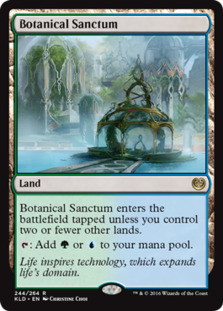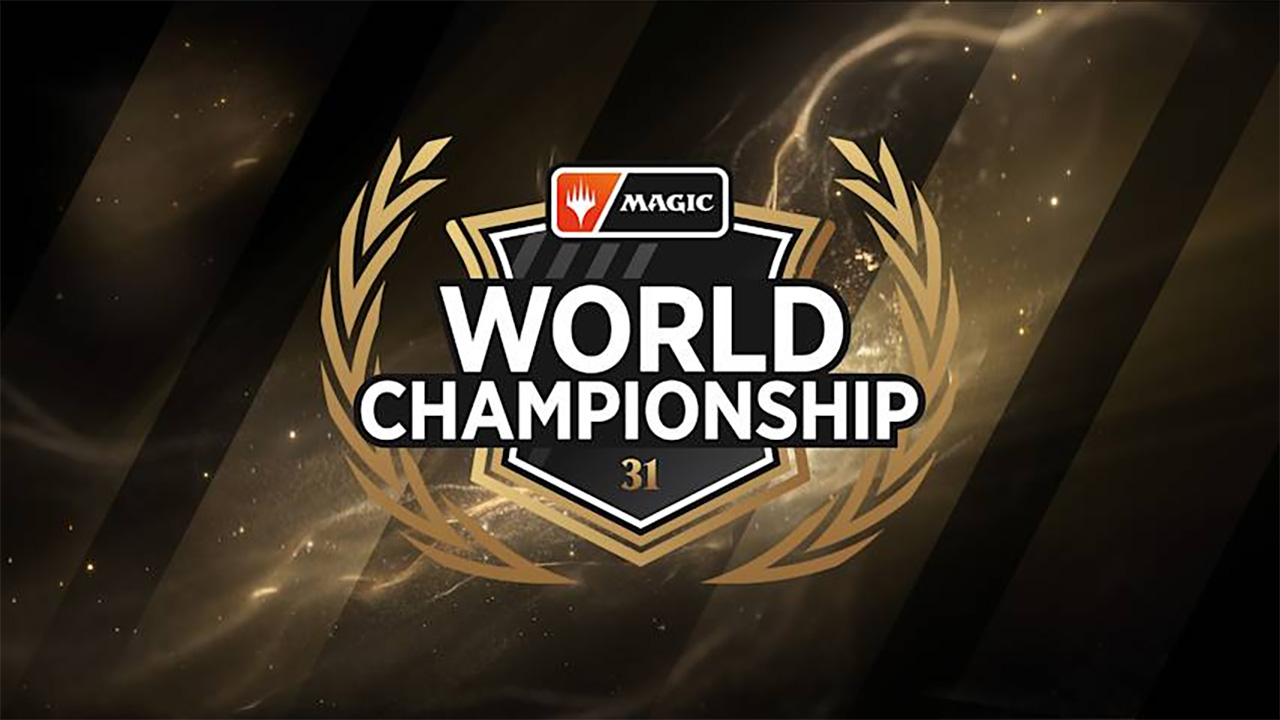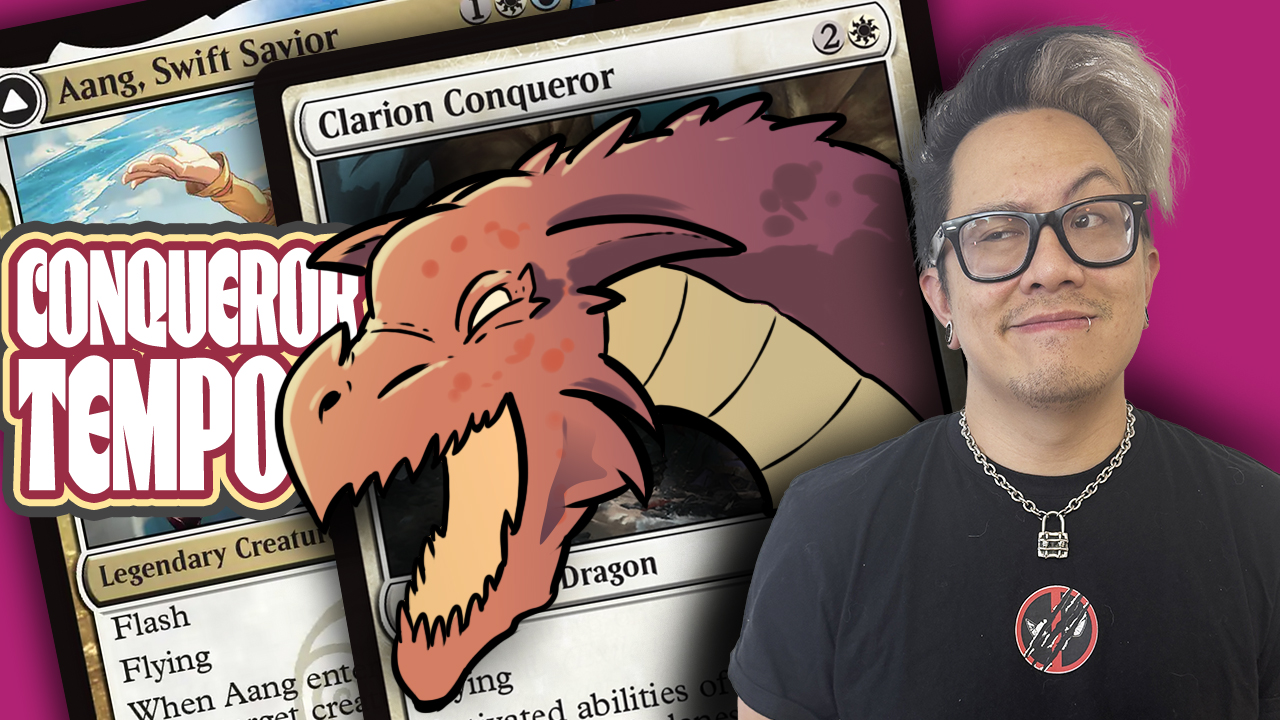Budget Magic: $100 (61 tix) Temur Miracle Grow (Standard)
բարև, Budget Magic lovers, it's that time again! This week, we are heading to Ixalan Standard again for a deck that might seem new but is actually the updated Ixalan Standard version of a really old deck: Miracle Grow! Thanks to the printing of Deeproot Champion along with some cards that have been floating around in Standard for a while, we have all of the pieces to recreate the classic tempo deck from nearly 20 years ago. The primary plan of Miracle Grow is to stick an early creature (or two) and then turn it into a huge threat by casting a ton of cheap spells. Because of this, the deck plays almost like a weird mashup of aggro and combo. After resolving a creature, we cast a flurry of spells, use Blossoming Defense and cheap counters to protect our creature, and hopefully finish the game quickly with a combination of creature beats and burn like Lightning Strike and Shock. Can we make Miracle Grow work in Ixalan Standard? Let's get to the videos and find out; then, we'll talk more about the deck.
First, a quick reminder: if you enjoy the Budget Magic series and the other video content on MTGGoldfish, make sure to subscribe to the MTGGoldfish YouTube Channel to keep up on all the latest and greatest.
Temur Miracle Grow (Deck Tech)
Budget Magic: Temur Miracle Grow vs. UW Approach (Match 1)
Budget Magic: Temur Miracle Grow vs. Sultai Merfolk (Match 2)
Budget Magic: Temur Miracle Grow vs. Sultai Energy (Match 3)
Budget Magic: Temur Miracle Grow vs. Mono-Black Aggro (Match 4)
Budget Magic: Temur Miracle Grow vs. UB Tapout (Match 5)

The Deck
The basic plan of Temur Miracle Grow is simple: we play an early-game creature, use spells to turn it into a real threat, protect the creature with more cheap spells, and eventually use it to close out the game (sometimes with the help of burn spells like Lightning Strike and Shock). With this in mind, the deck ends up playing a lot like Temur Prowess. However, to really understand the deck, we need to take a quick look at the original Miracle Grow deck from way back in 2001.

While we obviously don't have Force of Will and Winter Orb, if you really dig down to the nuts and bolts of the original Miracle Grow deck, you'll see that we actually have most of the pieces available in our current Standard format. Deeproot Champion is our Quirion Dryad, with Enigma Drake, Soul-Scar Mage, and Cryptic Serpent filling in for the rest of the creatures (and likely representing an upgrade). Opt and Chart a Course certainly aren't as strong as Brainstorm, but they do a pretty good imitation in the cantrip slot as far as Standard-legal cards are concerned. While it probably sounds strange, Blossoming Defense is basically our version of Daze or Force of Will. While it obviously can't counter our opponent's spells, it actually does an even better job when it comes to protecting our threats. We even get Attune with Aether as our version of Land Grant, and while the one-mana land tutor doesn't allow us to cut all the way down to 10 lands like the original, it does let us skimp to just 17, which is quite low compared to the rest of the decks in Standard. All things considered, I think our deck does an admirable job of porting Miracle Grow over to our current Standard format.
The Growers

Deeproot Champion is an extremely powerful creature, but it takes a special deck to harness its power. As a 1/1 for two, it's underpowered without help, but in a deck overflowing with cheap spells, it's pretty easy to grow Deeproot Champion into a two-mana 4/4, 6/6, or 8/8 just by casting spells we wanted to cast anyways. Typically, Fatal Push would be a major problem, but since many of our cheap spells are dedicated to protecting our creatures, we actually do a pretty good job of keeping our Deeproot Champions alive, and once they get big, our opponent is often forced to chump them every turn, which means sooner or later we should be able to get through at our opponent's life total and close out the game.

Unlike our Deeproot Champion, Soul-Scar Mage doesn't grow permanently, instead just getting bigger until end of turn whenever we cast a spell thanks to prowess, but it makes up for this downside by coming down on Turn 1 to give us extremely aggressive starts. While it doesn't come up all that often, the upside of giving our burn spells pseudo-wither is occasionally very important, allowing us to do things like use a Shock to make a Gifted Aetherborn a 0/1 before it deals damage and kills our creature. Most importantly, Soul-Scar Mage gives us another creature to support our "spells matter" plan and another payoff for overloading our deck with efficient non-creature spells.

Enigma Drake is our big finisher and, at three mana, the most expensive creature in our deck. By the time we cast our Enigma Drake, it's often a 4/4 flier for four and usually grows much bigger as the game goes along. It also matches up surprisingly well with some of the most played removal spells in the format, with Abrade and Lightning Strike being unable to kill it and Fatal Push needing a revolt trigger to get the job done.
Beyond everything else, the biggest reason Enigma Drake is great in our deck is flying. While all of our creatures grow into huge threats, they do suffer from being chump blocked on the ground, while Enigma Drake can fly over most blockers to kill our opponent in just a couple of attacks. While Deeproot Champion is the centerpiece of the deck, thanks in no small part to its resemblance to Quirion Dryad, Enigma Drake is likely our best creature.

Rounding out our creature base is a couple of Cryptic Serpents, which gives us another undercosted threat. Since we have so many cheap spells, we usually cast it for two or three "real" mana, which makes the 6/5 a great deal. While, like Deeproot Champion, Cryptic Serpent occasionally suffers from being chump blocked, it is big enough that—at worst—it is usually eating one of our opponent's blockers every turn and slowly wearing down their defenses.
The Miracles
Card Draw


Opt and Chart a Course are super important to our deck's plan. Once we get a creature or two on the battlefield, all we really want to do is chain together spells to make them huge, and having cheap spells that don't cost us a card (or even net us a card, like Chart a Course with raid) are essential to making this plan work. When you think about what our deck is trying to do, a card like Opt doesn't just read "scry 1, draw a card"; it reads "scry 1, draw a card, give all of our creatures +1/+1," which makes it a pretty absurd deal for just a single mana. As for Chart a Course, it's extremely powerful in a deck that's always looking to be attacking, plus we occasionally intentionally cast it without raid so we can put another spell in our graveyard for Enigma Drake and Cryptic Serpent. Together, Opt and Chart a Course help make sure that our hand is always full of action while also growing our creatures along the way.
Protection



Blossoming Defense might be the most important card in our deck, making sure that after we put a lot of work into making our creatures into huge threats, they actually stick on the battlefield and don't just die to Fatal Push, Cast Out, or Vraska's Contempt. Not only does the hexproof part of Blossoming Defense allow us to fizzle removal spells for just one mana, but the +2/+2 (which is actually +3/+3, thanks to the fact our creatures miraculously grow whenever we cast a spell) allows us to force through damage and close out the game.
Censor is weird in this deck. While we can theoretically use it to protect our creatures, it's actually pretty hard to leave up two mana, since all of our prowess and psuedo-prowess abilities incentivize us to cast our instants and sorceries during our first main phase before attacking to get in as much damage as possible. The good news is that we can always cycle it away for just one mana to grow our Enigma Drake or make our Cryptic Serpent cheaper.
Meanwhile, Unsummon does double duty in our deck. Most often, we use it to force through damage by getting an opposing blocker out of the way, but we use it as a protection spell as well. Since we don't have a ton of creatures in our deck, we occasionally find ourselves in a spot where we really, really need an Enigma Drake (for example) to live so we can finish the game. While not ideal, in these situations, using an Unsummon to save our creature is much better than letting it die to a "real" removal spell, even if it does mean we need to spend some mana to recast the creature on our next turn.
Burn


Since Temur Miracle Grow is extremely focused on killing the opponent as quickly and efficiently as possible, all of our burn spells can go directly at the opponent's face when the situation calls for it. While this means we give up some versatility in Abrade and Magma Spray, Lightning Strike and Shock make up for it with raw killing power. In the early game, we can use these spells to clear a blocker out of the way so we can keep attacking with our creatures, and then in the late game, we can use them to finish things off by pointing them at our opponent's face!

Invigorated Rampage is only a one-of, but it's very strong with our ground creatures like Deeproot Champion and Cryptic Serpent, with trample giving them a way to push through opposing blockers. The downside is the pump spell doesn't boost toughness, so it doesn't actually help to save our creatures from removal or blockers in the same way as Blossoming Defense. This being said, nothing feels worse than growing a huge Deeproot Champion only to be unable to get in the one attack needed to finish the game, and Invigorated Rampage solves this problem with ease.
The Mana



The final piece to our Miracle Grow puzzle is the mana. While we won't spend too long talking about it, there are a couple of things worth pointing out. First, we only have 17 real lands along with four copies of Attune with Aether, which is basically an enters-the-battlefield-tapped land that also support all of our creatures by being a spell. While we don't have any energy synergies in the deck, just being a land that grows our Enigma Drakes, Soul-Scar Mages, and Deeproot Champions while also making our Cryptic Serpents cheaper is enough to make Attune with Aether great in our deck.
The other thing I wanted to mention about the mana base was the fast lands, which add a ton to the budget (the non-land cards in the deck are actually very cheap, but Botanical Sanctum, Spirebluff Canal, and Aether Hub cost more than $60 by themselves). Since our deck tops out at three mana and is built to be extremely aggressive, playing any lands that enter the battlefield tapped hurts the deck greatly. While some budget decks can get by with a handful of tapped lands, this one cannot. If we are forced to play off curve thanks to tapped lands, our odds of winning the game drop dramatically. As such, the total cost of the deck is a bit more than I'd like (although if you have the fast lands from other decks, you can build Temur Miracle Grow with draft chaff), but in this case, splurging on lands is a necessary evil to make the deck function properly. The good news is that the fast lands are good cards to own anyway, since they are not just Standard staples but heavily played in Modern as well, so if you're going to spend a bit extra, these are the cards to do it on.
Wrap-Up
All in all, we finished 3-2 with the deck, and while the record was fine, it was also a bit frustrating because at least one of our losses wasn't so much because our opponent actually beat us but because we lost to ourselves and some horrible mana situations. Playing just 17 lands comes with a risk, and even with a ton of card draw and Attune with Aether, we will have games where our mana just doesn't work out. On the other hand, skimping on lands also adds to our explosiveness and makes it much easier to chain together spells to win the game. As such, I'm pretty happy with the 17-land mana base, although it is worth mentioning the risk of skimping on lands.



As far as changes I'd make to the deck, there really aren't very many. The creatures felt strong, and for the most part, the spells felt good as well. Finding room for another copy of Invigorating Rampage might be correct, since we did sometimes run into situations where our only reasonable way to win the game was Enigma Drake thanks to flying, although Enigma Drake was usually enough to get the job done in these situations. Otherwise, finding another source or two of energy (maybe Harnessed Lightning) could help as well because we lost at least one game thanks to having an Aether Hub-heavy draw but without the energy to make colored mana.
Basically, Temur Miracle Grow felt really solid and competitive, but even more importantly, it was a blast to play. While it is an aggro deck at heart, the amount of spell slinging and card draw made it fun to play, even for someone like me who tends to shy away from aggro decks. We're fast enough to get in under (or, with the help of Enigma Drake, over) most of the midrange and control decks in the format and generally have bigger creatures than other aggro decks (although we could add some lifegain to the sideboard to shore up the Ramunap Red matchup even more). Give Temur Miracle Grow a shot; I don't think you'll be disappointed!
Ultra-Budget Temur Miracle Grow

When it comes to making Temur Miracle Grow ultra-budget, we've got a good news / bad news situation. The good news is that, outside of the fast lands, the deck is already dirt cheap, which means all we need to do to get the deck into the ultra-budget range is cut back on the mana base. The bad news is twofold. First, the only way to get the deck into the ultra-budget range is to cut the lands, since none of the non-lands are worth much of anything, which means we don't have much flexibility. Second, if there was ever a Budget Magic deck that needed fast lands, it's Temur Miracle Grow, so unlike some other decks, going from seven fast lands to four Evolving Wilds and more basics really hurts the deck. While heading this direction is probably fine for the kitchen table, even to play Temur Miracle Grow at the FNM level, you really need to upgrade into the fast lands to have a chance of competing.
Non-Budget Temur Miracle Grow

Not a ton of changes for the non-budget build of Temur Miracle Grow. Apart from adding the fourth copy of Spirebluff Canal, the only card I'd even consider adding to the main deck is Search for Azcanta. While the enchantment is a bit slow for our deck, it also gives us a ton of value if the game happens to go long, considering we have a massive 28 non-creature, non-land card in our main deck. Otherwise, we get a few more "go long" cards in the sideboard, with more copies of Search for Azcanta, Hazoret the Fervent, and Chandra, Torch of Defiance. Hazoret the Fervent might deserve main-deck consideration as well, but it's pretty risky to run a four-mana card in a 17-land deck, even with Attune with Aether and a bunch of cantrips. Basically, the build we played in the videos is pretty close to what I'd consider the optimal build of Temur Miracle Grow; it just happens to (pretty much) fall into the budget price range!
Conclusion
Anyway, that's all for today. As always, leave your thoughts, ideas, opinions, and suggestions in the comments, and you can reach me on Twitter @SaffronOlive or at SaffronOlive@MTGGoldfish.com.













